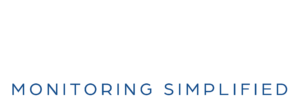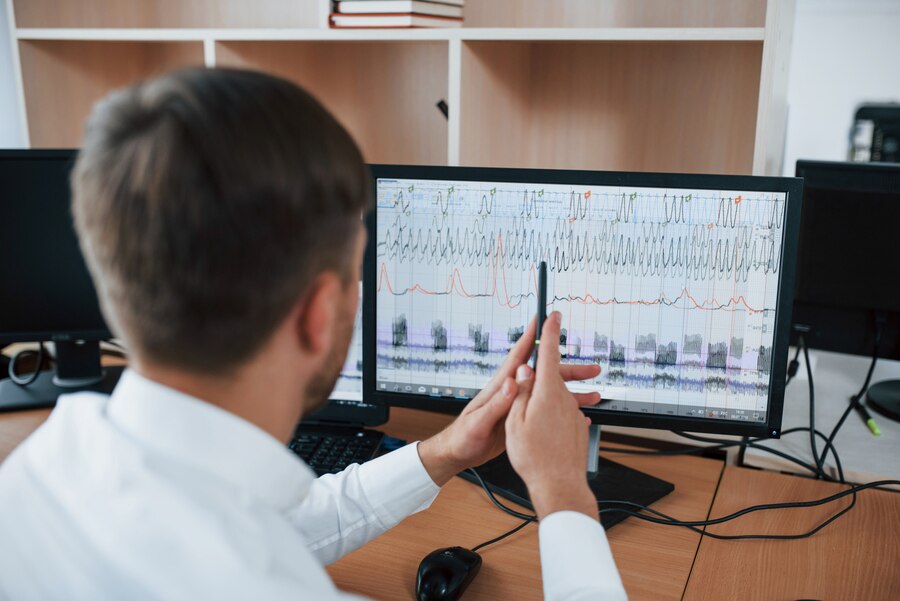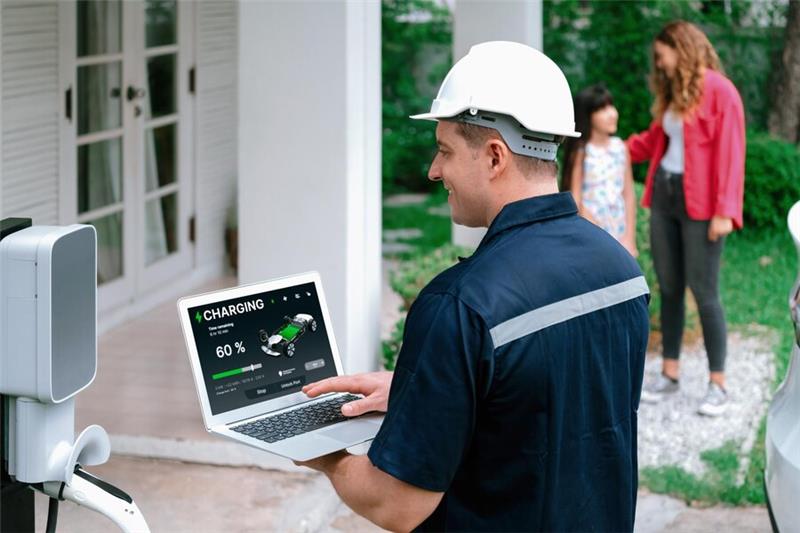Introduction
In the realm of electrical asset management, the importance of monitoring the health and performance of assets is paramount. One of the key metrics that provide invaluable insights into the health of these assets is vibration. Vibrations, both low and high-frequency, can be indicative of underlying issues, wear and tear, or potential failures. As industries progress, so does the technology to monitor these vibrations. This article navigates through the spectrum of vibration monitoring, emphasizing its significance and how modern electrical asset monitoring software is leveraging it to ensure optimal asset health and longevity.
Basics of Vibration Monitoring
Vibration monitoring revolves around assessing oscillations of machines and components. These oscillations can stem from imbalances, misalignments, wear, or external forces. By capturing and analysing vibration data, electrical engineers and asset managers can gauge the operational health of assets, predicting potential failures and ensuring smooth operations.
Vibration monitoring, a cornerstone in the realm of electrical asset management, is an intricate process of assessing oscillations or movements in machinery and components. At its core, vibration monitoring captures these oscillations, translating them into data points that are instrumental in deciphering the health and performance of assets.
The science behind it is deeply rooted in physics. When machinery operates, it generates vibrational patterns. These patterns, when analyzed, can provide insights into the machinery’s operational state. For instance, a sudden spike in vibration could indicate a misalignment or imbalance, while consistent, low-frequency vibrations might suggest wear and tear.
Electrical asset monitoring software has ingeniously integrated this principle. By employing advanced sensors and algorithms, these software solutions can continuously monitor and analyze these vibrations in real-time. The data, once captured, is processed, providing actionable insights to stakeholders. For electrical engineers and facility managers, this data becomes an invaluable resource, offering a granular view of asset health.
However, the art of vibration monitoring is not just about capturing data; it’s about interpreting it. This is where the “navigating the vibration spectrum” becomes crucial. The spectrum, ranging from low-frequency to high-frequency vibrations, encompasses various vibrational patterns, each indicative of specific operational states or potential issues. By understanding and navigating this spectrum, companies can pre-emptively identify and address potential problems, ensuring optimal asset health and prolonged lifespans.
Modern electrical asset monitoring software has made this navigation seamless. With intuitive dashboards, real-time alerts, and advanced analytics, these software solutions have democratized vibration monitoring. No longer is it a domain exclusive to experts; even novice users can leverage these tools, making informed decisions.
One of the remarkable advancements in this field is the integration of artificial intelligence (AI) and machine learning (ML) in the software. These technologies enhance the software’s capability to predict potential failures or breakdowns based on historical and real-time vibration data. By employing predictive maintenance models, companies can schedule interventions proactively, drastically reducing downtimes and operational costs.
In essence, the basics of vibration monitoring, while rooted in physics, have evolved dramatically with the advent of technology. Today, it stands as a testament to how traditional principles, when combined with modern technology, can drive efficiency, reliability, and growth.
Low-Frequency Vibration: Causes and Implications
Low-frequency vibrations often originate from imbalances, misalignments, or mechanical looseness. While they might seem harmless initially, unchecked low-frequency vibrations can lead to premature wear, energy losses, and even catastrophic failures. Recognizing and addressing these early can save substantial costs and downtimes.
The realm of vibration monitoring is vast, encompassing a wide spectrum of frequencies. Within this spectrum, low-frequency vibrations hold significant importance for electrical asset managers and engineers. By understanding the causes and implications of such vibrations, stakeholders can ensure optimal asset health, prolonging their lifespan and ensuring efficient operations.
Low-frequency vibrations typically range below 10 Hz and originate from various sources within electrical and mechanical systems. One of the primary causes of such vibrations is imbalances in rotating machinery. An imbalanced rotor, for instance, can induce vibrations that, while low in frequency, can have profound implications over time. Similarly, misalignments in shafts or gears, mechanical looseness, and structural resonances can also lead to low-frequency vibrations.
In the electrical asset domain, these vibrations can be indicative of issues such as transformer core vibrations, electrical imbalances, or even problems in the power supply. For substation managers and transformer design engineers, identifying and addressing these vibrations becomes paramount.
The implications of unchecked low-frequency vibrations are manifold. At the most basic level, they lead to wear and tear. The consistent oscillation, even if minute, induces stress on components, leading to premature degradation. Over time, this can result in operational inefficiencies, increased energy consumption, and reduced asset lifespan. More critically, if these vibrations escalate unchecked, they can cause catastrophic failures, leading to significant operational downtimes and economic losses.
Modern electrical asset monitoring software, with its advanced vibration monitoring capabilities, offers a solution. These software solutions, equipped with sophisticated sensors and analytics, can detect even the most minute of low-frequency vibrations. By processing and analyzing this data in real-time, the software provides actionable insights to stakeholders. For instance, if a transformer starts exhibiting low-frequency vibrations due to core issues, the software can alert maintenance managers, allowing them to intervene before the issue escalates.
Moreover, with the integration of AI and ML, these software solutions can also predict potential problems. By analyzing historical vibration data and comparing it with real-time readings, the software can anticipate when a component might fail or when maintenance is due, enabling proactive interventions.
Low-frequency vibrations might seem benign, their implications are profound. By understanding their causes and potential repercussions, and by leveraging advanced electrical asset monitoring software, stakeholders can navigate the challenges they pose, ensuring optimal asset health and operational efficiency.
High-Frequency Vibration: Detection and Management
High-frequency vibrations, stemming from bearing faults or gear failures, require specialized sensors for detection. These vibrations, if not addressed, can rapidly escalate, leading to asset damage. Modern electrical asset monitoring software integrates advanced algorithms to detect and manage such anomalies, ensuring asset longevity.
Navigating the vibration spectrum, one encounters the realm of high-frequency vibrations, typically manifesting above 1000 Hz. Such vibrations, while less perceptible than their low-frequency counterparts, are equally, if not more, critical in the context of electrical asset health monitoring. Precise detection and astute management of high-frequency vibrations are pivotal for ensuring the longevity and optimal performance of electrical assets.
High-frequency vibrations often emerge from sources like bearing faults, gear mesh issues, or even electrical anomalies. For instance, a slight misalignment in bearings or a minuscule defect in gear teeth can induce high-frequency vibrations. These vibrations, due to their nature, are often transient and require sophisticated sensors and algorithms for accurate detection.
The challenge in detecting such vibrations lies in their subtlety. Traditional vibration monitoring tools might not always capture them effectively. However, modern electrical asset monitoring software, equipped with advanced sensors and high sampling rates, can detect even the most transient of these vibrations. The data, once captured, undergoes rigorous analysis, translating into actionable insights for stakeholders.
For facility managers, maintenance managers, and electrical engineers, this data becomes an indispensable resource. High-frequency vibrations, if unchecked, can escalate rapidly. A minor bearing fault today, if not addressed, can lead to a complete bearing failure in the future. The implications are manifold: increased operational downtimes, escalated maintenance costs, and reduced asset lifespans.
The management of high-frequency vibrations, therefore, becomes a strategic imperative. By leveraging electrical asset monitoring software, companies can not only detect these vibrations but also predict potential escalations. The software, by analysing historical and real-time vibration data, can anticipate when a component might fail, allowing for proactive interventions. This predictive maintenance approach ensures that assets operate at their peak performance, prolonging their lifespan, and optimizing operational efficiency.
Moreover, the software offers tools for root cause analysis. By delving deep into the vibration data, stakeholders can identify the exact cause of the high-frequency vibrations, be it a bearing misalignment, gear defect, or any other issue. Such insights empower them to address the root cause, rather than just the symptoms, ensuring a holistic approach to asset health management.
In essence, high-frequency vibrations, while challenging to detect and manage, are not insurmountable challenges. By understanding their nuances, and by harnessing the power of modern electrical asset monitoring software, stakeholders can navigate the intricacies of high-frequency vibration monitoring, ensuring that their assets remain in optimal health.
Integrating Vibration Monitoring with Electrical Asset Monitoring Software
The synergy between vibration monitoring and electrical asset monitoring software provides a holistic view of asset health. By offering real-time insights, predictive analytics, and actionable feedback, this integration empowers stakeholders to make informed decisions, optimizing maintenance schedules and reducing operational costs.
In the world of asset health monitoring, precision and proactivity are pivotal. Vibration monitoring, being one of the most critical metrics, demands tools and systems that can capture, analyse, and interpret its intricacies. Enter electrical asset monitoring software, a technological marvel that integrates vibration monitoring, providing stakeholders with a holistic view of asset health.
At the heart of this integration lies advanced sensors capable of capturing the entire vibration spectrum, from subtle low-frequency oscillations to transient high-frequency vibrations. These sensors, strategically placed on critical assets, relay real-time vibration data to the software. But it’s not just about data collection. The real magic begins when this raw data undergoes rigorous processing and analysis within the software’s advanced analytical engine.
Modern electrical asset monitoring software employs sophisticated algorithms, often powered by artificial intelligence (AI) and machine learning (ML). These algorithms shift through the vast volumes of vibration data, identifying patterns, anomalies, and potential issues. For instance, a sudden spike in high-frequency vibrations might indicate a bearing fault, while consistent low-frequency oscillations could suggest mechanical looseness or misalignment.
The software doesn’t just stop at detection. By leveraging historical data and predictive modelling, it can also anticipate potential failures or breakdowns. This predictive capability is a game-changer for facility managers, maintenance managers, and electrical engineers. Instead of reactive maintenance, where issues are addressed post-facto, stakeholders can now adopt a proactive approach, scheduling interventions based on predictive insights. This not only reduces operational downtimes but also ensures optimal asset health and longevity.
Another remarkable facet of this integration is its user-friendly interface. Despite the technical complexity, electrical asset monitoring software offers intuitive dashboards, visual representations, and real-time alerts. This democratizes vibration monitoring, making it accessible not just to experts but to all stakeholders. Whether it’s a GIS design engineer looking for substation vibrations or an industrial plant manager concerned about machine health, the software provides insights tailored to their specific needs.
Moreover, the software’s capabilities extend beyond just vibration monitoring. By integrating other metrics like temperature, pressure, and electrical parameters, stakeholders get a 360-degree view of asset health. This holistic approach ensures that no stone is left unturned, no anomaly goes unnoticed.
In essence, the integration of vibration monitoring with electrical asset monitoring software represents a paradigm shift in asset health management. It’s a testament to how technology, when harnessed effectively, can transform traditional practices, driving efficiency, reliability, and growth.
Future Trends: Advancements in Vibration Monitoring Techniques
As technology advances, so do vibration monitoring techniques. The future promises wireless sensors, AI-driven analysis, and enhanced predictive maintenance models. These advancements aim to make vibration monitoring more efficient, accurate, and integrated, ensuring that electrical assets operate at their peak performance.
The world of vibration monitoring is not static. As industries evolve and technological frontiers expand, so do the methods and techniques employed to ensure optimal asset health. In the pursuit of precision and efficiency, advancements in vibration monitoring techniques have emerged as the beacon for stakeholders, guiding them towards a future of unparalleled asset reliability and performance.
One of the most promising trends is the incorporation of wireless vibration sensors. These sensors, devoid of cumbersome cables and connections, can be strategically placed on assets, even in the most inaccessible locations. The data captured is relayed in real-time to electrical asset monitoring software, ensuring seamless integration and analysis. For utility companies and industrial plant managers, this means reduced installation complexities and enhanced data accuracy.
Another ground breaking advancement is the fusion of artificial intelligence (AI) with vibration monitoring. By employing machine learning algorithms, electrical asset monitoring software can now self-learn. Over time, the software becomes adept at identifying even the most subtle vibration anomalies, predicting potential issues with remarkable accuracy. This AI-driven approach, coupled with predictive analytics, empowers stakeholders with foresight, allowing them to schedule maintenance activities proactively.
Additionally, the emergence of edge computing in vibration monitoring cannot be overlooked. Instead of relying solely on centralized data processing, edge computing allows for data analysis closer to the source, i.e., the sensors. This ensures rapid data processing, real-time insights, and reduced latency, especially crucial for applications where timely interventions can prevent catastrophic failures.
The realm of augmented reality (AR) and virtual reality (VR) is also making its mark in vibration monitoring. Engineers and maintenance professionals can now leverage AR/VR tools integrated with electrical asset monitoring software for immersive asset health visualization. By overlaying real-time vibration data on virtual asset replicas, these tools provide a visual representation of asset health, making anomaly detection intuitive and effective.
Lastly, the trend towards integration is unmistakable. Modern electrical asset monitoring software is evolving into comprehensive platforms, integrating vibration monitoring with other metrics like temperature, pressure, and electrical parameters. This holistic approach ensures that stakeholders get a 360-degree view of asset health, optimizing maintenance activities and operational efficiency.
The future of vibration monitoring is bright, driven by technological innovations and a relentless pursuit of excellence. As we navigate the vibration spectrum, these advancements promise to redefine the paradigms of asset health management, ensuring that electrical assets not only perform but excel.
The Synergy of Vibration Monitoring and Asset Management
The world of electrical asset management stands at the cusp of a revolution, driven by advanced monitoring techniques like vibration analysis. As we navigate the vibration spectrum, it becomes evident that understanding and managing these vibrations is not just a technical necessity but a strategic imperative. By integrating vibration monitoring with electrical asset monitoring software, companies are not only ensuring the longevity of their assets but also optimizing their operational efficiency.
For stakeholders, from electrical engineers to asset managers, this integration offers a tool that combines precision with foresight. As we look to the future, continuous innovation, research, and adaptation will be crucial. The goal is clear: to harness the power of vibration monitoring fully, to ensure that electrical assets are not just managed but optimized. In this journey, every oscillation, every vibration, and every frequency will play a pivotal role, guiding us towards a future of reliability, efficiency, and growth.




